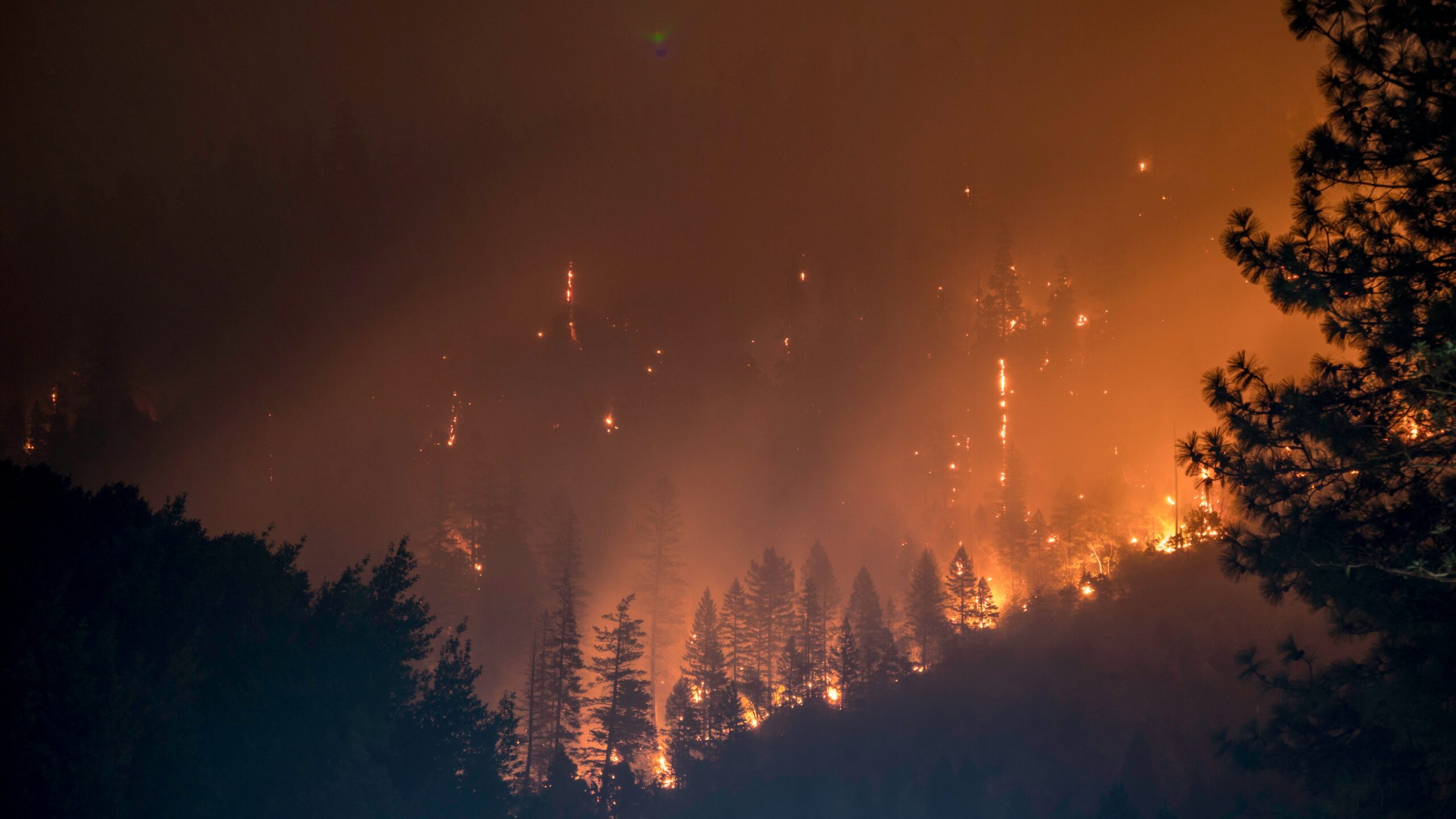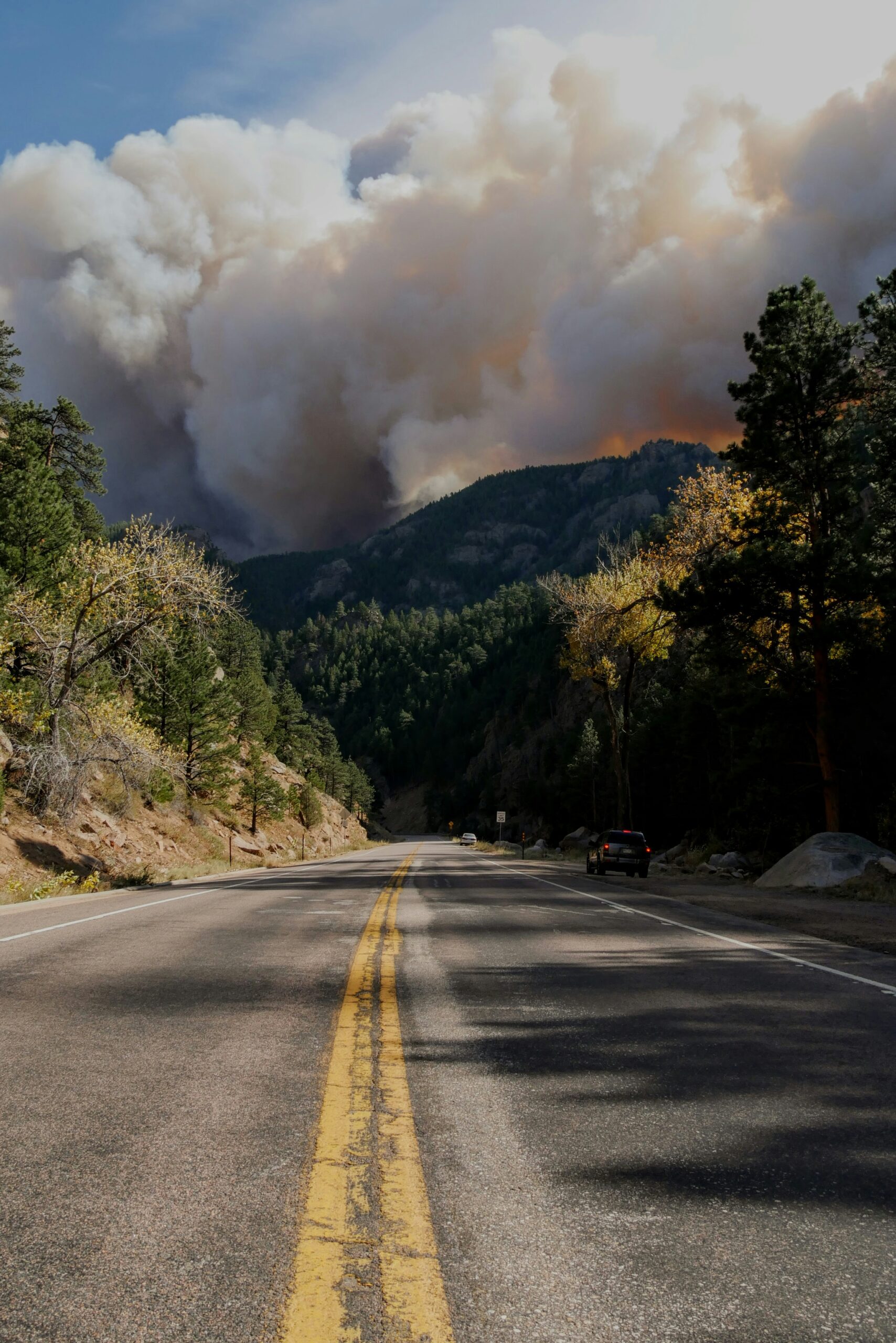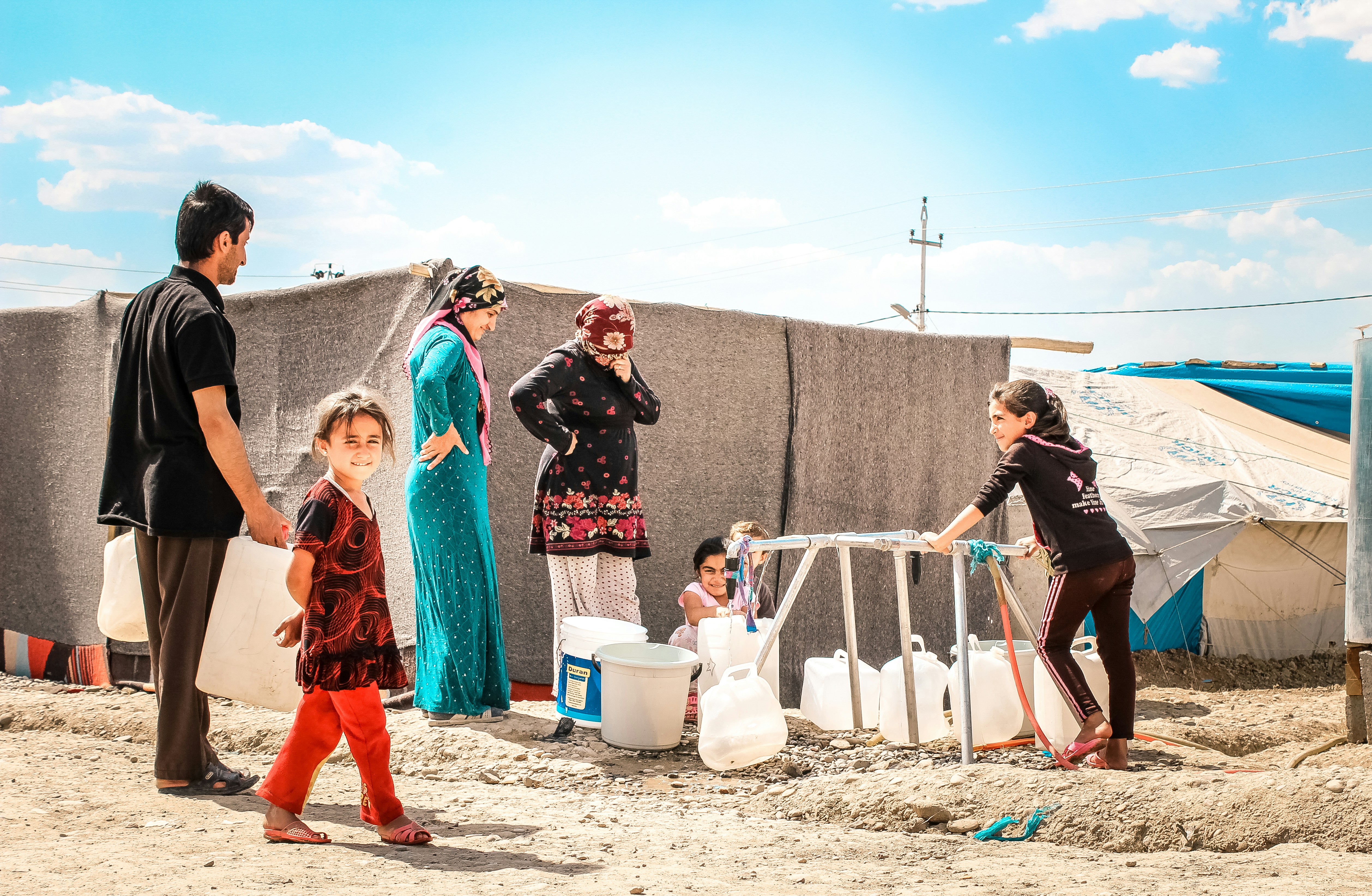Raging Fires and Air Quality: The Challenges of Suppression Efforts in Canada

Photo by Matt Howard on Unsplash
The Growing Concern Over Fires and Air Quality
Wildfires have increasingly emerged as a significant environmental and public health concern in Canada. The frequency and intensity of these fires have exacerbated the challenges associated with air quality, leading to heightened attention from policymakers, public health officials, and communities alike. As global temperatures rise and incidents of extreme weather proliferate, the landscape of wildfire management is evolving, necessitating a better understanding of its implications.
One of the major contributions of wildfires is the release of particulate matter and harmful gases, which can severely degrade air quality. Smoke from wildfires contains a complex mixture of chemicals, including carbon monoxide, volatile organic compounds, and fine particulate matter (PM2.5), all of which are known to pose significant health risks. The adverse effects are particularly pronounced for vulnerable populations, including children, the elderly, and individuals with pre-existing health conditions such as asthma or cardiovascular disease.
Moreover, these air quality issues are not restricted to the immediate vicinity of the fires. Smoke can traverse vast distances, affecting communities far from the original source. This phenomenon has resulted in increasingly frequent air quality advisories in various regions, prompting governments to take proactive measures. Public health campaigns have been initiated to educate citizens on recognizing the symptoms of smoke inhalation and implementing protective measures during high-risk events.
The relationship between wildfires and air quality underscores the urgent need for effective fire management strategies. As we navigate these challenges, it becomes essential to focus on comprehensive plans that combine suppression efforts with community awareness and preparedness. By understanding the nuances of this issue, we can work toward mitigating the detrimental impacts of wildfires on air quality and, subsequently, on public health.
The Current State of Wildfires in Canada
As of October 2023, Canada is grappling with an unprecedented wildfire crisis, with thousands of active fires ravaging various regions across the country. This year has seen a significant increase in wildfire incidents, driven by escalating temperatures, prolonged drought conditions, and prolonged dry spells that have created a conducive environment for fire ignition and spread. Reports indicate that over 8,000 active wildfires have been recorded, affecting an estimated 6 million hectares of land, a stark contrast to previous years’ averages.
The provinces of British Columbia, Alberta, and Saskatchewan are among the hardest hit, with a concerning number of incidents reported in the northern territories as well. The geographical diversity of Canada compounds the challenge of wildfire containment, as varied climates and topographies affect fire behavior and suppression tactics. In many areas, especially in the western provinces, unusually hot and dry weather patterns have led to extreme fire hazards, prompting officials to declare states of emergency and implement evacuation orders in several communities.
Weather conditions, often influenced by climate change, have escalated the complexity of managing these wildfires. For instance, the ongoing heat waves and erratic precipitation patterns have exacerbated the situation, limiting the effectiveness of traditional firefighting strategies. The intermingling of urban developments with forested areas, often referred to as the wildland-urban interface, further complicates firefighting efforts, as these regions are particularly vulnerable to fire spread.
In sum, the current state of wildfires in Canada is alarming, significantly influenced by climatic and geographical factors. Understanding the scale of this challenge is essential for developing comprehensive strategies aimed at improving wildfire suppression efforts and fostering community resilience in affected regions.
Understanding Air Quality and Its Importance
Air quality refers to the condition of the air within our environments and is primarily determined by the amount of pollutants it contains. These pollutants can originate from various sources, including industrial emissions, vehicle exhaust, and natural occurrences such as wildfires. The assessment of air quality is crucial as it directly impacts human health, the ecosystem, and overall quality of life. Maintaining optimal air quality is essential to ensure that individuals, especially vulnerable populations such as children, the elderly, and those with pre-existing health conditions, are protected from the adverse effects of air pollution.
Human health is significantly influenced by the quality of air we breathe. Poor air quality can lead to a myriad of health issues, such as respiratory illnesses, cardiovascular diseases, and other chronic conditions. The World Health Organization has established guidelines that indicate unsafe levels of air pollutants, which can exacerbate these health concerns. Vulnerable populations are disproportionately affected as they may have a heightened sensitivity to pollutants, leading to severe health complications even at lower exposure levels.
Wildfires, a growing concern in regions like Canada, notably contribute to declining air quality. The combustion of vegetation produces considerable amounts of particulate matter and harmful toxins that enter the atmosphere. These particles can remain airborne for extended periods, spreading across vast areas and affecting communities far from the fire’s source. Furthermore, the smoke generated from wildfires is not only a visual nuisance but also poses significant health risks, even to those not directly in the vicinity of the flames. Recognizing the complex relationship between wildfires and air quality is critical in addressing public health and environmental challenges, especially as climate conditions change and the frequency of such events continues to rise.
Challenges in Suppressing Wildfires
The suppression of wildfires presents a multitude of challenges that hinder effective management and response efforts across Canada. One critical factor is weather conditions, which can change rapidly and unpredictably. Hot, dry, and windy weather can exacerbate fire behavior, leading to rapid expansion and making containment efforts significantly more difficult. Firefighters often face intense heat, which not only threatens their safety but also reduces their operational effectiveness. Additionally, thunderstorms can ignite new fires, creating multiple fronts that further strain resources and complicate suppression strategies.
Another significant challenge lies in forest management practices. Many areas in Canada have forests that have not undergone proper management, resulting in an accumulation of deadwood, underbrush, and other combustible materials. These conditions can create a fire-prone environment, making it easier for wildfires to ignite and spread. Moreover, historical policies may have prioritized fire suppression over ecological considerations, leading to an imbalance in forest health and resilience. This has raised concerns around the long-term sustainability of regional ecosystems, prompting authorities to consider alternative approaches such as controlled burns to mitigate future wildfire risks.
Resource allocation also poses a formidable obstacle in wildfire suppression efforts. With the increasing frequency and severity of wildfires, firefighting agencies are often stretched thin, battling numerous blazes simultaneously. Limited funding, staffing shortages, and logistical challenges can result in delayed response times or force fire management teams to prioritize certain fires over others. In some cases, authorities may opt to monitor specific wildfires rather than engage in direct suppression activities. This decision can be based on factors like the fire’s location, potential impact on human settlements, or budgetary constraints. Such a strategic approach allows resources to be concentrated on fires that pose a more immediate threat, thereby formulating an effective response despite the inherent complexities involved in wildfire suppression in Canada.
The Role of the Canadian Interagency Forest Fire Centre (CIFFC)
The Canadian Interagency Forest Fire Centre (CIFFC) plays a pivotal role in the coordination of wildfire response and suppression efforts across Canada. Established to enhance inter-agency collaboration, CIFFC works to ensure a cohesive and effective approach to wildfire management nationwide. This coordination is essential, given the increasing frequency and intensity of wildfires exacerbated by climate change. As a central hub, the CIFFC facilitates knowledge transfer, shared resources, and strategic planning among federal, provincial, and territorial organizations responsible for wildfire suppression.
One of the primary strategies implemented by the CIFFC is the establishment of a national mutual aid agreement. This framework allows jurisdictions experiencing severe wildfires to request and receive assistance from others, effectively pooling resources and expertise during crises. Whether it involves dispatching firefighting crews, aircraft, or specialized equipment, the CIFFC acts as the conduit for effective resource allocation. This collaboration among agencies is crucial, as it optimizes the capabilities of local firefighting teams, ensuring that they have adequate support when faced with overwhelming wildfire conditions.
The CIFFC is also instrumental in developing and implementing policies that address the growing challenges posed by wildfires. By forming partnerships with indigenous communities, academic institutions, and non-governmental organizations, the Centre strengthens its data-driven approach to wildfire management. Research initiatives led or supported by the CIFFC focus on understanding fire behavior, evaluating air quality impacts, and improving suppression techniques. This comprehensive understanding aids in crafting policies that not only respond to immediate wildfire threats but also prepare for future challenges.
Ultimately, the CIFFC’s commitment to coordination and collaboration serves as a cornerstone of Canada’s wildfire management strategy. Through the integration of resources and expertise, it significantly contributes to the overarching goal of minimizing the impact of wildfires on air quality and public safety.
Health Implications of Air Quality During Wildfires
Wildfires are not only devastating to the environment but also pose significant health risks to those exposed to the resulting smoke. As wildfires rage, the air quality typically deteriorates, leading to a variety of health implications, particularly concerning respiratory issues. Fine particulate matter (PM2.5) generated from wildfire smoke can penetrate deep into the lungs, exacerbating conditions such as asthma and chronic obstructive pulmonary disease (COPD). For individuals with pre-existing respiratory conditions, even short-term exposure to reduced air quality can lead to severe health complications, necessitating further medical intervention.
In addition to respiratory concerns, there is growing evidence suggesting that wildfire smoke can have detrimental effects on cardiovascular health. Studies indicate that exposure to particulate matter can trigger heart attacks, strokes, and other cardiovascular conditions. This risk is intensified for older adults and individuals with existing heart ailments. Moreover, the impact of poor air quality extends beyond physical health; it encompasses mental health concerns as well. Prolonged exposure to smoke and the accompanying stress of wildfires can result in anxiety, depression, and post-traumatic stress disorder (PTSD), especially in communities directly affected by such disasters.
The implications of declining air quality during wildfires are far-reaching, affecting not just individual health but also straining emergency services and healthcare systems. Emergency responders often face increased demands during wildfire events, facing their own health risks while attempting to provide aid. Communities located near wildfire-prone areas must remain vigilant regarding air quality advisories and employ measures to protect their residents’ health. As the frequency and intensity of wildfires increase due to climate change, prioritizing public health responses is essential in mitigating the widespread effects of deteriorating air quality.
Long-term Effects of Wildfires on Air Quality
Wildfires represent one of the most significant contributors to air pollution, generating substantial amounts of particulate matter and volatile organic compounds (VOCs) that elevate the levels of air contaminants in the atmosphere. The aftermath of these fires has long-lasting implications for air quality, affecting both human health and the environment. The cycle of ignition and suppression, particularly in regions like Canada, introduces persistent air quality challenges that need to be comprehensively understood.
Following a wildfire, the immediate release of smoke and pollutants can lead to acute health problems, such as respiratory issues and cardiovascular diseases. However, the long-term impact is equally concerning. Frequent wildfires alter local ecosystems, making them more susceptible to future fires, thus creating a cycle that exacerbates air quality degradation. As vegetation is lost and soil becomes scorched, the land’s ability to capture carbon diminishes, contributing to climate change—a key factor that can further increase the frequency and intensity of wildfires.
Moreover, the lingering smoke and particulates from these fires can persist in the atmosphere for extended periods, affecting air quality far beyond the fire’s geographic boundaries. Studies indicate that communities situated downwind from wildfire sites often experience prolonged periods of compromised air quality, which can result in chronic health issues for residents. Furthermore, the chemical composition of wildfire smoke often changes with increasingly frequent fires, leading to potentially more harmful effects on both health and the environment.
In conclusion, the long-term effects of wildfires on air quality extend beyond immediate human health concerns, impacting ecosystem integrity and contributing to climate change. Understanding these implications is essential for developing proactive strategies to manage air quality in the context of increasing wildfire frequency and intensity. Emphasizing sustainable land management practices and effective fire suppression policies can help mitigate the long-lasting effects of wildfires on air quality and the environment.
Community Response and Adaptation Strategies
As wildfires increasingly threaten communities in Canada, residents must adopt proactive measures to enhance preparedness and ensure safety. Effective community response is essential for mitigating the impacts of these natural disasters, particularly concerning air quality deterioration associated with smoke and particulate matter. One critical strategy is the implementation of community education initiatives that offer residents vital information on wildfire threats, evacuation procedures, and health risks related to poor air quality.
Educational programs can take various forms, including workshops, informational pamphlets, and online resources that focus on wildfire readiness. These initiatives can guide individuals on creating emergency kits, developing family communication plans, and identifying local resources available during a wildfire crisis. Encouraging participation in community drills can also bolster preparedness and improve coordination among residents, local agencies, and emergency services.
Individuals can take specific actions to protect their health when air quality levels decline due to wildfire smoke. First and foremost, staying informed about air quality updates is crucial. Local authorities and environmental agencies often provide real-time air quality indices, which allow residents to adjust their activities accordingly. During times of poor air quality, it is advisable to limit outdoor exposure, particularly for vulnerable populations such as children, the elderly, and individuals with pre-existing respiratory conditions. Investing in air purifiers for homes and wearing masks outdoors can further mitigate health risks.
Communities can also establish support networks to aid those most affected by wildfires and air quality issues. This can include creating platforms for sharing resources, coordinating transportation for at-risk individuals, or offering mental health support initiatives. By fostering a sense of camaraderie and collaboration, community members can enhance their resilience and adapt more effectively to the challenges posed by wildfires and their impact on air quality.
Conclusion: Bridging the Gap Between Response and Prevention
In recent years, Canada has faced unprecedented challenges from raging wildfires, which not only threaten ecosystems but also significantly compromise air quality. The discussions herein underline the urgency of addressing the interplay between immediate fire suppression efforts and long-term strategies centered around wildfire prevention. Effective management of wildfires requires a dual approach that harmonizes rapid response with proactive measures aimed at mitigating the risk of fires before they escalate.
Current suppression efforts frequently focus on extinguishing fires as quickly as possible, thereby prioritizing reactionary measures. However, such a focused approach can lead to the overlook of essential preventative actions, such as proper land management, controlled burns, and community engagement in fire education. By shifting some emphasis toward these long-term strategies, Canada can not only reduce the frequency and intensity of wildfires but also improve overall air quality, enhancing public health outcomes.
Moreover, the role of policy cannot be understated in this context. Increased awareness at all levels of government can drive the development of robust policies designed to combat the escalating wildfire threat. Such policies should advocate for sustainable land management practices and the integration of scientific research into decision-making processes. It is essential to engage communities, equipping them with knowledge and resources to become active participants in fire prevention efforts.
Ultimately, addressing the challenges posed by wildfires and their associated impact on air quality necessitates a balanced approach that considers both immediate suppression actions and the implementation of preventative strategies. Only through comprehensive planning and unified efforts can Canada successfully navigate the complexities of wildfire management and safeguard the environment and public health for future generations.





